
Doing Business in India
prepared by the India Trade Point
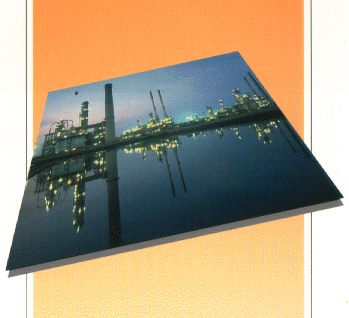
Overview
India's economic diversity matches its social diversity. Technology
ranges from bullock carts with modern wheels to space satellite
capability. Ancient cotton spinning and rice milling machines dot the
countryside. Harley Davidson motor bicycles of 1940s vintage power
rickshaws, palatial mansions are cheek-by-jowl with shanty towns and
hutments. India is a mixed economy - very mixed indeed, with contrasts
and contradictions abounding.
The diversity is reflected in the markets for consumer products. Class is
difficult to define in India. Incomes by themselves do not define an
individual's class. Purchase behaviour is related to cultural conditioning,
location, source of income, and to some extent, education and
occupation. One income category will contain very disparate purchase
behaviours.
Despite the low levels of per capita income, there exists in India a large
class of consumers for packaged and branded consumer goods, home
appliances, entertainment electronics and personal transport as well as
radio, television, telecommunication and transport services. It is the
production and sales of these goods that mainly sustained the annual
industrial growth of over 7% in the 1980s.
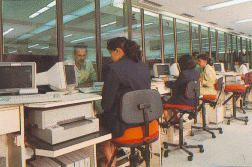 Surveys show that the universe of the consumers of manufactured
consumer goods is over 500 million. However, the class of consumers that
constitute the main buyers of consumer durables and non-durables
number between 100 million and 300 million, depending on the nature
of the product.
Surveys show that the universe of the consumers of manufactured
consumer goods is over 500 million. However, the class of consumers that
constitute the main buyers of consumer durables and non-durables
number between 100 million and 300 million, depending on the nature
of the product.
The spectacular growth in the market for consumer goods reflects a
significant rise in income levels and rapid changes in the lifestyle of large
segments of the population. While the spending patterns and buying
intensity of this class of consumers do not compare with those in
industrialised societies, the sheer size of this segment represents an
enormous market potential for a variety of consumer goods.
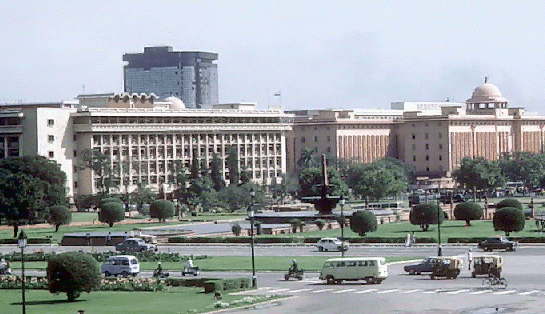
The growth in consumer spending and changes in consumption patterns
have been facilitated as much by government policies to ease supply
constraints and encourage consumer demand as by the vast market
infrastructure in India. Marketers distribute messages and products to
nearly 3,800 towns and cities and over half a million villages with an
extraordinary degree of smoothness and efficiency.

The economic reforms initiated in July 1991 are designed to strengthen
market forces and increase efficiency of resource use. Together with
high domestic savings and investment rates of over 24% of GDP and
massive increases in public outlay on rural development and
infrastructure, they are expected to raise economic growth to over
6% per annum and boost per capita consumer expenditure by
4% per annum in real terms over the next few years. By the turn of the
century, it is expected that the consumer class that spends mainly on
manufactures and services will swell from about 300 million to over 600
million, making India one of the largest and fastest growing consumer
markets in the world.
India's industrial base. spanning virtually every area of manufacturing
activity implies an enormous domestic demand for industrial products.
This demand will grow rapidly in the 1990s as a result of large investments
in the modernisation and expansion of capacities in key infrastructural
areas, electronics. industrial and agricultural machinery. components.
agro-based inputs. chemicals and petrochemicals. fertilizers. packaging
material, etc. India's rich natural resources, diversified industrial sector
and large pools of skilled personnel provide a sound base for the annual
growth rates of 7% to 10% forecast in the output of these key industrial
sectors in the 1990s. India offers a large and growing market not merely
for consumer goods, but for all areas of industrial activity.
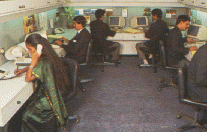
Size of the Markets
It is estimated that there are 533 million Indians
which form the broad market for manufactured
consumer goods, of which the size of the core
group ranges from 700 million for durables to
300 million for consumables.
Households & Income Levels
The annual per capita GNP for 1991 (as estimated by the World Bank) was US $ 330, which translates to US S 1.851 per household (average size of 5.61 members). This, however, does not
adequately reflect the purchasing power of Indian incomes. International comparisons would be more accurate in terms of the purchasing power parity of currencies.
The World Bank estimates this to be equivalent to US $ 1.150 per capita, or US $ 6,452 per household.
Recent data is available from household surveys, which tell us about the changes in the characteristics of Indian households relating to income, occupation, purchase behaviour, etc.
SIZE OF THE MARKETS
...Households & Income Levels
Five household surveys of the consumption of selected manufactured consumer goods, each
covering around half a million persons were conducted by the National Council for Applied Economic Research (NCAER) between 1985-86 and 1993-94.
According to NCAER estimates, the number of households in India rose from 142 million in 1989-90
to 155 million in 1992-93, the equivalent population rising from around 799 million to 872 million.
The number of urban households rose from 40 million to 42 million, while the number of rural
households rose from 102 million to 113 million . This reflected a growth of 5% in urban and 10.6% in rural households. As a percentage of population, there were 27% urban households and 73% rural households in 1992-93.
The latest household consumption survey by NCAER for 1992-93 suggests that the number
of households in the two highest levels of income continue to show the maximum growth. Further,
the growth in the two highest income levels in rural India is faster than in urban India. The
households in the highest income level grew by 181% in rural India in the period 1989-90 to 1992-93
against 37% in the urban areas. As a result. the number of households in the high income levels
was a little below 2.1
...Households & Income Levels
million in urban India and over 1.5 million in rural India, totalling 3.6 million, which is around 20 million people.
Using income by itself to define a whole group of people is inappropriate and could be misleading.
Purchase patterns provide a clearer indication.
For instance, households in
the lowest level of income
above the poverty line are
also among buyers of
manufactured goods. In
1992-93 they bouaht 1.85
million transistor radios, 0.68
million small black and
white TV sets, 0.67 million
pressure cookers, 4.12
million flashlights, 2.46
million bicycles, over 5
million wrist watches and
1.8 million electric fans.
It is interesting to see that
households in this income
bracket earning upto
Rs.18.000 per annum
accounted for substantial
quantities of purchases of
a number of products such
as: 39% of transistor radios
and 30% of mechanical
watches.

Thus, even among the low
levels of income, there are
those who aspire and are
able to purchase products
which offer convenience
and comfort. What should
be the design and pricing
of products aimed at them
and how they should be
marketed, are questions
for consideration. The fact
is that they are a sizeable
group and are potential
consumers.
Estimates of the so-called
middle class in India have
in the past put the number
at between 20 to 58
million households. The
NCAER surveys have a
figure of around 65 million
households at the various
middle levels of income. If
to this we add the 3.6
million households at the
highest levels of income,
as well as the 30 million
households in the lowest
income levels above the
poverty line that do
purchase manufactured
consumer goods, we
arrive at a total of 95
million households - 533
million people. This is the
population segment
which could be
considered as the broad
market for manufactured
consumer goods. It is a
vast market by any
yardstick .
The estimates of the size
of the class of consumers
which constitutes the core
market for consumer
goods and services vary,
depending on the
specific product or
service .
Typically, it ranges from
about 100 million for most
durables to 300 million for
consumables.
The NCAER study also
indicates that the
concentration of purchases
for most consumer durables
is in the middle income
groups (between Rs.18,000
and Rs.78,000), from over
69% of motorcycles; to 65%
of washing machines.
Rural Markets
The rural areas, which are
still home to 73% of India's
population, constitute an
important segment of the
mass market. In 1992-93,
over 75% of bicycles and
portable radios, over 60%
of table fans, sewing
machines and quartz
watches were bought in
rural India.

The few products for which
the lowest priced
categories accounted for
the largest proportion of
purchases include 53% of
bicycles (upto Rs.1,000),
and 40% of vacuum
cleaners (Rs.3,500).
Value for Money
It is clear that there is a
huge potential market for
appropriately designed
and priced products:
products that can be
manufactured on a large
scale and stripped down in
their design to the
essentials so that the
consumer gets the
functional performance
but not all the frills. At the
same time, it is clear that
the consumer will not
purchase a product
merely because of low
price. That explains why
for a large number of
products, the lowest priced
products do not account
for a large proportion of
the total purchases.
This can be seen in other
ways as well when one
considers the price range
of products bought by
households at different
income levels. The lowest
levels of income do not in
all cases account for the
maximum purchases of the
lowest priced products; nor
do rural markets invariably
go for the lowest priced
products .
Foreign Brands
There has been a
spectacular increase in
consumer spending in
recent years.
accompanied by
increasing sophistication.
Consumers can now
choose from a wide range
of domestic and foreign
brands .
Foreign names that have
gained wide consumer
acceptance in India
include Kawasaki, Honda.
Suzuki. Toyota and
Mitsubishi in the
automobile sector;
Britannia, Pepsi and Nestle
in the processed food
market; Gillette. Proctor &
Gamble. Lever and
Colgate in the personal
care products market;
Bosch and Phillips in the
consumer electronics and
home appliances market,
Van Heusen, Benetton and
Pierre Cardin in the
apparel market; and Bally.
Adidas and Lotto in the
footwear market. Foreign
brands vie with
increasingly sophisticated
domestic brands for the
growing market in India.
Consumption Trends
Private consumption expenditure grew at 73%
per annum at current prices through the eighties
and was US $ 790 billion in 7990-97. There was a
perceptible shift in consumer spending from
primary products to manufactured goods and
services.
Real growth rates in the demand for several
consumer durables and packaged consumer
goods exceeded 72% per year through the
7980s. Well-known foreign brands vie with
domestic brands in the increasingly
sophisticated consumer market.
Consumption Expenditure
One of the most striking
features ,about the Indian
economy is the sheer size
of the consumer market.
Private consumption
expenditure was Rs. 3,418
billion (US $ 190 billion) in
1990-91 at current prices.
Nearly 55% of this
expenditure was on food
and beverages. Of the
rest, 9.9% was spent on
clothing and footwear,
10.8% on rent. fuel and
power; 10.6% on transport
and communication 3,1%
on furniture. furnishings
and household
appliances, 3.4% on
recreation. education and
cultural services. and
about 6.6% on other
consumer goods and
services.
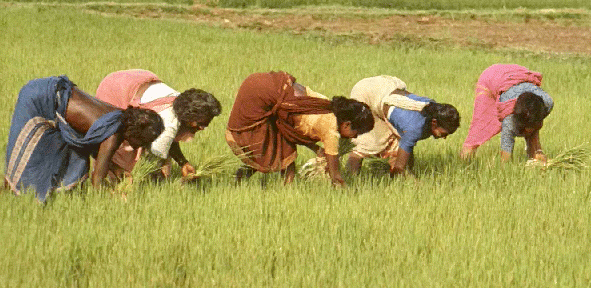
Aggregate expenditure
grew at an annual rate of
13% in the 1980s in terms of
current prices. The highest
growth rate was recorded
by expenditure on
transport and
communication, which
increased by about 21%
per annum. Expenditure on
household appliances.
consumer goods and
services rose by about 14%
per annum. This reflected a
perceptible shift in
consumer spending from
primary products to (%)
manufactured goods and
services .
Significant shifts were also
evident in consumer
spending on food and
beverages. The share of
milk products. fruits and
vegetables in aggregate
expenditure increased from
15% in 1981-82 to 17% in
1990-91 while that of cereals
etc., dropped from 22% to
17% over the same period.
Durables and Services
The market for consumer
goods. where supply
constraints began to ease
only by the early 1980s, has
expanded substantially.
There has been strikingly
rapid growth in the
demand for packaged
consumer goods.
consumer durables and
various types of services.
Against the overall annual
growth rate of 7.7% in
industrial production,
output of consumer
durables rose 14% per
annum through the 1980s.
Output of consumer
electronics. in value terms.
rose 30% per year over this
period. Production and
CONSUMPTION TRENDS
...Durables and
Services sale of passenger cars.
scooters, motor cycles
and air conditioners each
increased four times
between 1980-81 and
1990-91, a compound
annual growth rate of
nearly 15%.
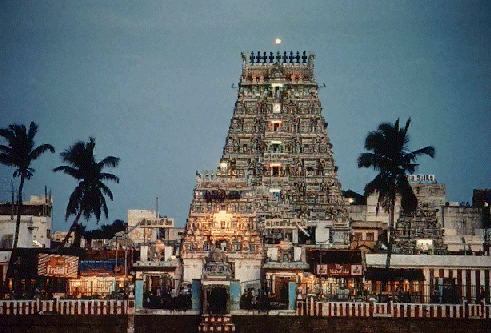
For futher information on the Trade Point project in New Delhi, please contact:
New Delhi Trade Point
TP Coordinator: Dr. V. Bharucha, Additional Economic Adviser
Ministry of Commerce, Udyog Bhawan, Rafi Marg,
New Delhi 110 011
tel: (91) 11 3016334
fax: (91) 11 3019447/3014418
e-mail: tpnewdelhi@eto.geis.com
Copyright © 1995 New Delhi Trade Point




 Surveys show that the universe of the consumers of manufactured
consumer goods is over 500 million. However, the class of consumers that
constitute the main buyers of consumer durables and non-durables
number between 100 million and 300 million, depending on the nature
of the product.
Surveys show that the universe of the consumers of manufactured
consumer goods is over 500 million. However, the class of consumers that
constitute the main buyers of consumer durables and non-durables
number between 100 million and 300 million, depending on the nature
of the product.






